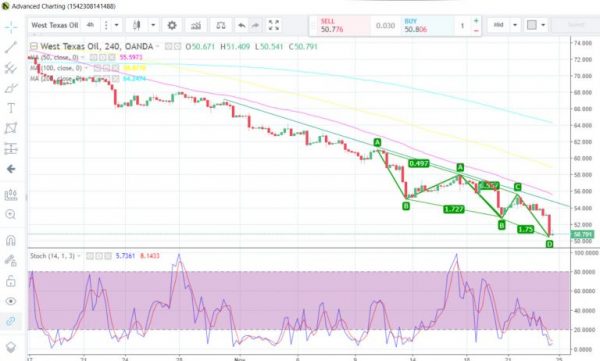Oil headlines have been sparse over the past 24-hours, but the broad selloff resumed as markets remain focused on rising production levels globally and fears of a slowdown in global economic growth. The US benchmark, West Texas Intermediate crude is poised for its 7th consecutive weekly loss. Brent futures also took out the key psychological $60.00 handle and is tentatively finding support at the $58.75 level. Oil is one of Canada’s largest exports and the recent slide continues to drive the Canadian dollar lower against the greenback.
Yesterday, Saudi Arabian Energy Minister Khalid al-Falih noted that he sees weak oil demand in January and that the kingdom would respond accordingly to cool the global market’s anxiety. Oil did react to his comment that November’s oil output is now above 10.7 million barrels per day, this followed the surge markets saw in October. The Saudi oil minister said that demand for Saudi crude may be lower in January compared with December.
The countdown continues to the 175th OPEC meeting on December 6th, but expectations of any cut having a major turnaround for oil are dwindling as the larger oil producers are near record levels and weakening demand concerns are growing. Earlier in Europe, both Germany and the Euro Zone saw the preliminary manufacturing PMI readings for November both come in softer than expected and the lowest level since March 2016.
Price action on the 4-hour oil chart shows that bullish bounce that was identified earlier in the week has ended and that next leg lower may have formed a new bullish ABCD pattern. If valid we could see price a technical bounce here. The overall bearish trend remains intact with key resistance potentially coming from the $66 .00 to $66.75 region. Major support lies at $45.00 level for WTI.












